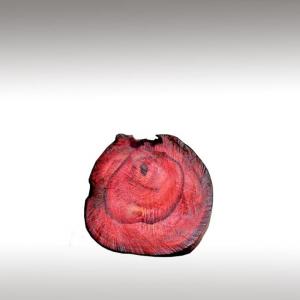
ROSEWOOD ESSENTIAL OIL (ANIBA ROSAEODORA) - ESSENTIAL OILS

BASE / GENERAL DATA
Information submited: April 9, 2015 Modified: March 22, 2018 By: OperaDreamhouse
Botanical Name: Aniba rosaeodora
Common Method of Extraction: Steam Distilled
Part Typically Used: Wood
Color: Clear with a yellow tinge
Consistency: Thin
Perfumery Note: Middle
Strength of Initial Aroma: Sweet, woody, fruity, floral aroma.
Aniba Rosaeodora is a species of Magnoliid tree in the Lauraceae family. Its common names are Brazilian Rosewood and Rosewood tree. It grows in parts of the tropical rainforest of South America. It is an endangered species that sees exploitation for its essential oil.
Aniba Rosaeodora grows in the tropical rainforests of South America. It is found in the Brazilian states of Amapá, Amazonas, and Pará. It is also found in Colombia, Ecuador, Guyana, Peru, Suriname, Venezuela, and French Guiana, where it was formerly more widespread.
Rooswood tree is medium sized, tropical with a reddish bark and heartwood, bearing yellow flowers.
The Aniba Rosaeodora is known as Pau-Rosa in Brazil. The supply of this wood was greatly overused in the past and it now is as difficult to legally trade as elephant ivory.
Rosewood tree is massive, up to 30 meters in height and 2 meters in diameter, and evergreen.
The entire tree is fragrant. Substances in the tree include linalool and rubranine. The top note is sweet, camphoraceous-peppery. The body note is sweet-woody, floral-spicy. The dry - out is medium tenacity, light floral-woody.
The plant is one of the commercially important sources of Rosewood essential oil. The tree is collected in the wild. After felling, the trees are cut into one - meter long logs which are taken to the river bank and stockpiled there. When they arrive at the distillery, the logs are chipped and then steam distilled.
Each tree yields about 1% oil by weight of wood.
Chemical strucuture:
Rosewood oil is a valuable essential oil, especially in perfumery. It contains the substancelinalool, which has a number of uses.
Rosewood oil is rich in linalool, a chemical which can be transformed into a number of derivatives of value to the flavour and fragrance industries, and up until the 1960s Rosewood oil was an important source of natural linalool. With the advent of synthetic linalool this use largely disappeared.
Common Method of Extraction: Steam Distilled
Part Typically Used: Wood
Color: Clear with a yellow tinge
Consistency: Thin
Perfumery Note: Middle
Strength of Initial Aroma: Sweet, woody, fruity, floral aroma.
Aniba Rosaeodora is a species of Magnoliid tree in the Lauraceae family. Its common names are Brazilian Rosewood and Rosewood tree. It grows in parts of the tropical rainforest of South America. It is an endangered species that sees exploitation for its essential oil.
Aniba Rosaeodora grows in the tropical rainforests of South America. It is found in the Brazilian states of Amapá, Amazonas, and Pará. It is also found in Colombia, Ecuador, Guyana, Peru, Suriname, Venezuela, and French Guiana, where it was formerly more widespread.
Rooswood tree is medium sized, tropical with a reddish bark and heartwood, bearing yellow flowers.
The Aniba Rosaeodora is known as Pau-Rosa in Brazil. The supply of this wood was greatly overused in the past and it now is as difficult to legally trade as elephant ivory.
Rosewood tree is massive, up to 30 meters in height and 2 meters in diameter, and evergreen.
The entire tree is fragrant. Substances in the tree include linalool and rubranine. The top note is sweet, camphoraceous-peppery. The body note is sweet-woody, floral-spicy. The dry - out is medium tenacity, light floral-woody.
The plant is one of the commercially important sources of Rosewood essential oil. The tree is collected in the wild. After felling, the trees are cut into one - meter long logs which are taken to the river bank and stockpiled there. When they arrive at the distillery, the logs are chipped and then steam distilled.
Each tree yields about 1% oil by weight of wood.
Chemical strucuture:
Rosewood oil is a valuable essential oil, especially in perfumery. It contains the substancelinalool, which has a number of uses.
Rosewood oil is rich in linalool, a chemical which can be transformed into a number of derivatives of value to the flavour and fragrance industries, and up until the 1960s Rosewood oil was an important source of natural linalool. With the advent of synthetic linalool this use largely disappeared.

SPIRITUAL PRACTISES DATA

MEDICINE / HEALTH DATA

BEAUTY / COSMETICS DATA

FOOD / COOKING DATA
COMMENTS
No comments.


